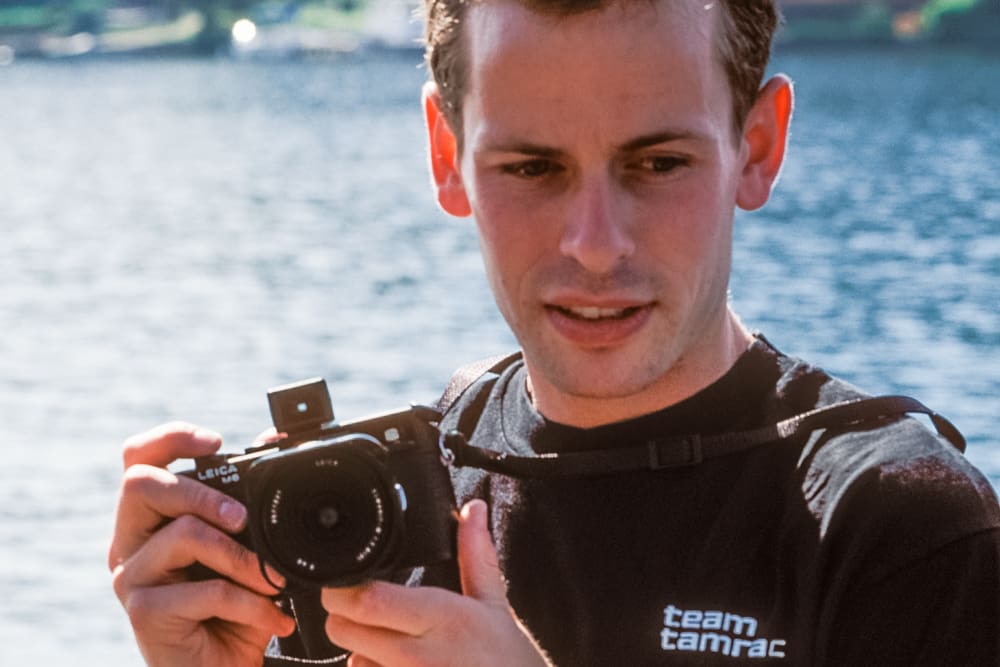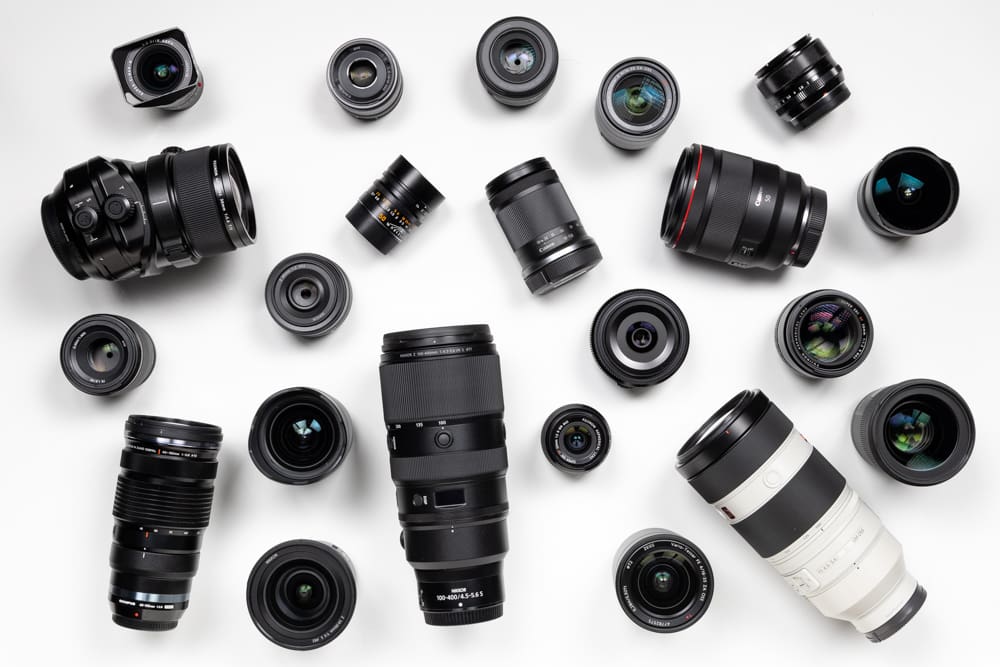As we get ready to close out the year it means that it’s time for my 2025 Camera Buyer’s Guide. I put this guide together each year to help all photographers figure out how to find the right camera to fit their needs. Every year the market shifts a little bit; a few new models are introduced and a few models disappear – I want to make navigating the new camera marketplace easy for you so I created this free guide to help you through the process.
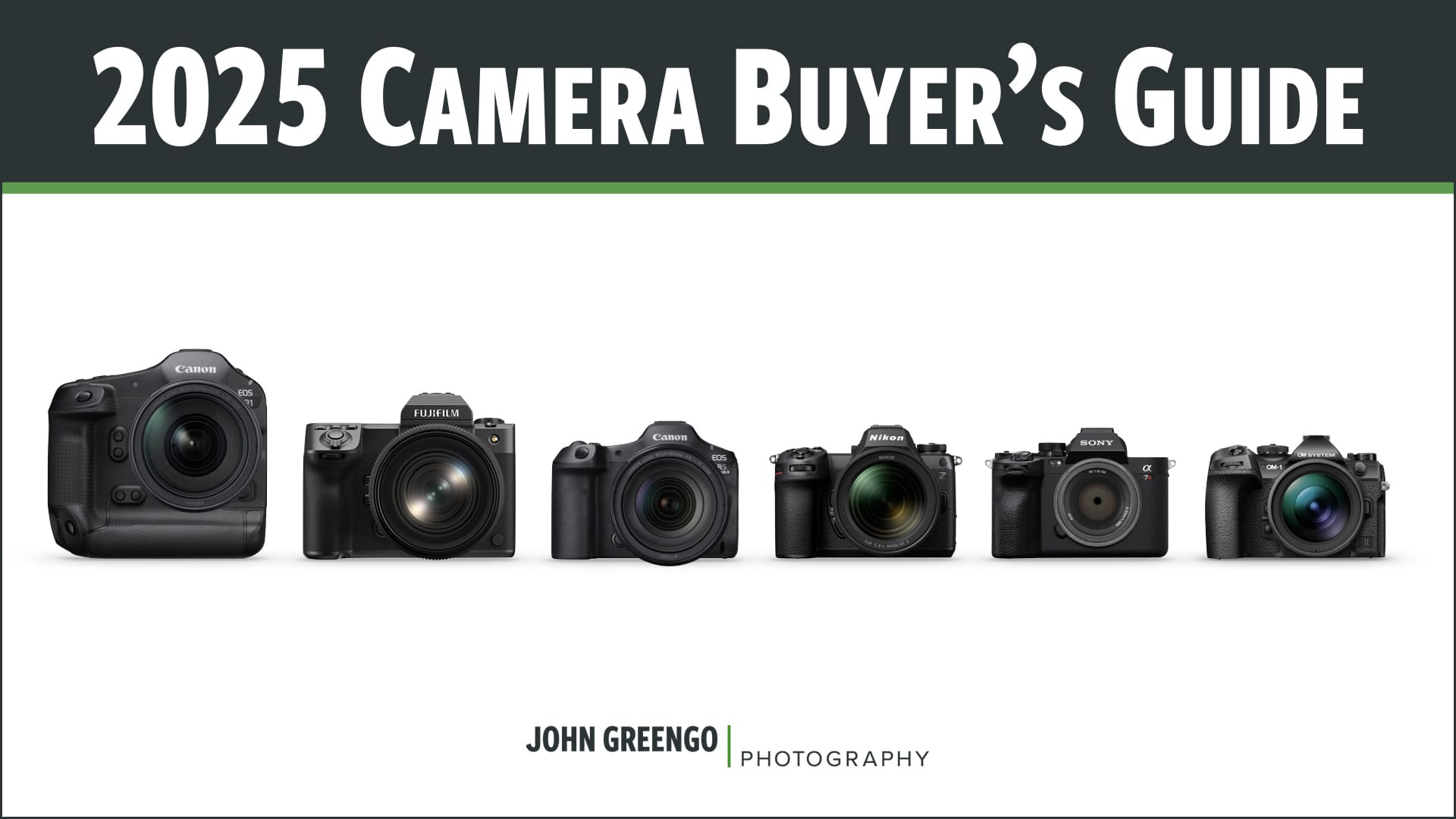
My downloadable video guide is broken into two sections: Part I – Camera Fundamentals is designed for those that are new to the world of interchangeable lens cameras. I discuss the basic styles of cameras and give an overview of features that you can expect to find. In Part II – 2025 Recommendations, I discuss the various brands, rank the strength of the various systems and offer specific camera recommendations for different types of photographers.
The Current Trend
Judging from my online classes, in-person classes, and photography tours in 2024, it seems most people are now photographing with full-frame systems. Canon, Nikon and Sony’s full-frame cameras are the most prevalent type of camera for the enthusiast today. There are still a fair number of Fujifilm, OM System, and other crop-frame cameras out there; it’s just that the overall crop-frame market is much smaller than in the past.
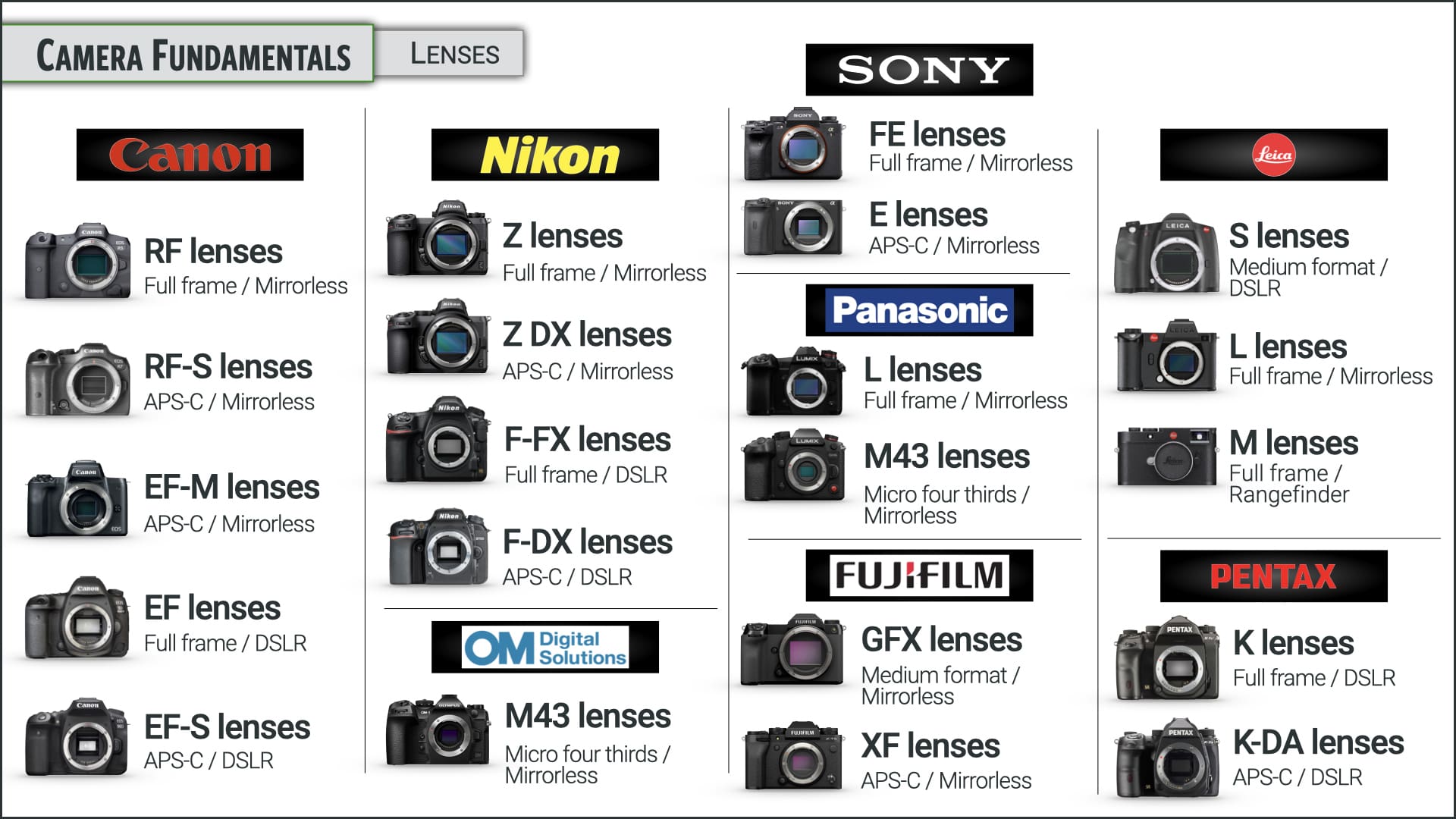
What specifically has diminished, in a significant manor, is the crop-frame cameras from Canon, Nikon, and Sony. In my classes and tours from 10 years ago, 90% of the participants would have crop-frame cameras. Frequently there would be just one outlier with a full-frame system.
Now days it’s reversed; most photographers have full-frame systems and a few outliers will have one of the many crop-frame systems. It seems that the modern photography enthusiast has decided to go to the deep end of the pool. Less people have chosen to dabble in photography, but those that have decided to pursue the craft have gone for the more expensive full-frame systems; likely costing 2x to 3x as much as a crop-frame system.
Why the change?
Cameras on mobile phones keep improving and fewer and fewer people see the need for a dedicated camera. For those that have a very casual interest in photography, they will use their phone. For the person that has a more serious interest in the craft of photography, then a proper camera with a large collection of interchangeable lens options is the choice.
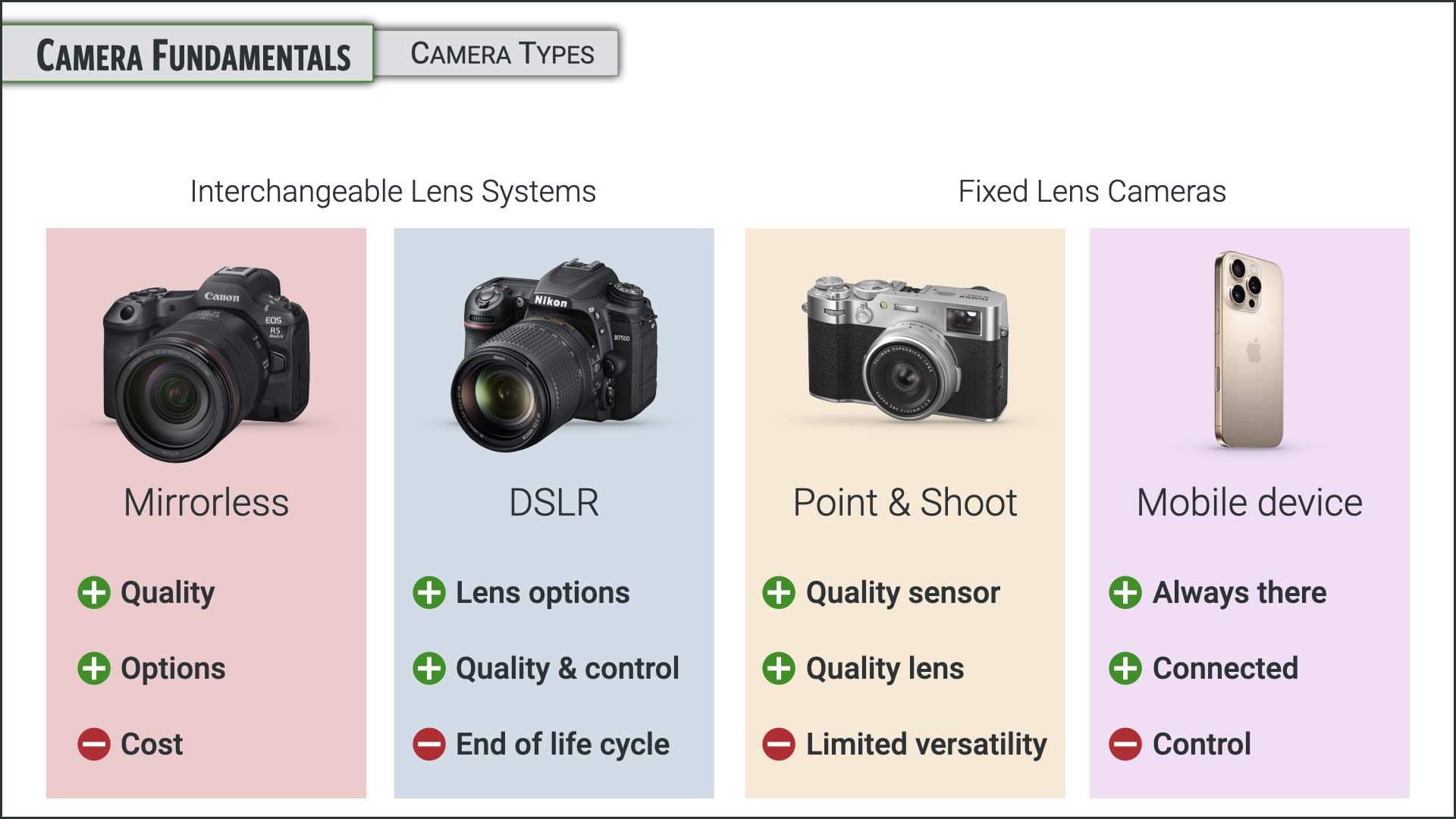
I can also see that this trend has been assisted by the camera manufacturers themselves. In the move to mirrorless, both Canon and Nikon have focused on full-frame cameras and lenses; there has only been a token investment in their crop-frame bodies and lenses. This seems to be a chicken and egg situation. Is there no demand because there is little supply, or is there sparse pickings because there is low demand? I’m not totally sure.
Sony, Panasonic, and Fujifilm started with small sensor systems but have since added larger sensor systems into their lineup. Featuring two lines has cut into the rate of new offerings for their original crop-frame systems. Manufacturers are clearly keen to capitalize on the growing upscale market.
Popular Cameras – Popular classes
I don’t have any inside information about sales numbers with the camera manufacturers, but I do know what camera classes are selling well. In 2024 our top selling camera class was the Nikon Z8: Complete Camera Guide. It took the top spot away from the 2023 top seller – the Olympus OM-1: Complete Camera Guide.
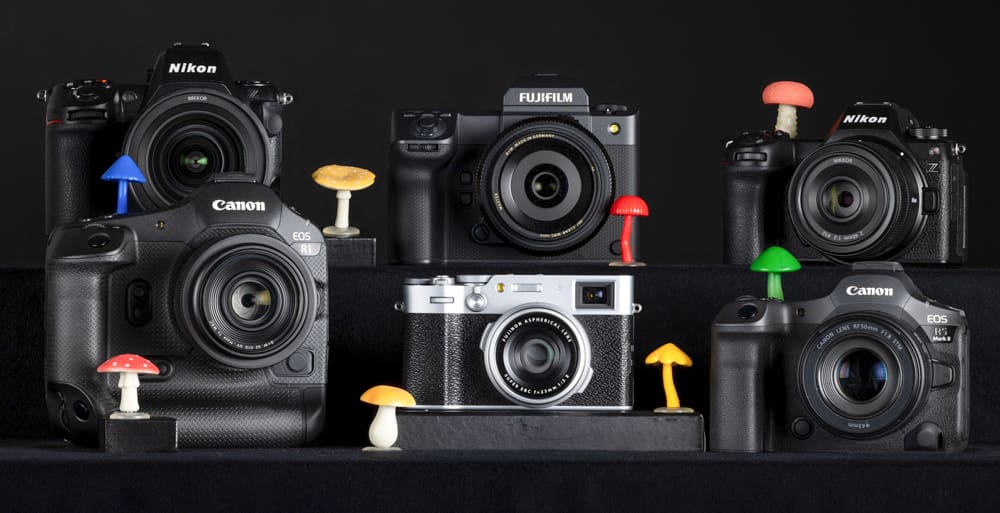
Canon – coming on strong
Canon’s new R5 mark II is proving to be very popular and demand for a course is strong. I have the new camera in-hand and, a Canon R5 mark II: Complete Camera Guide is currently in production and expected to be ready shortly after the new year. I expect this to be our top selling class in 2025.
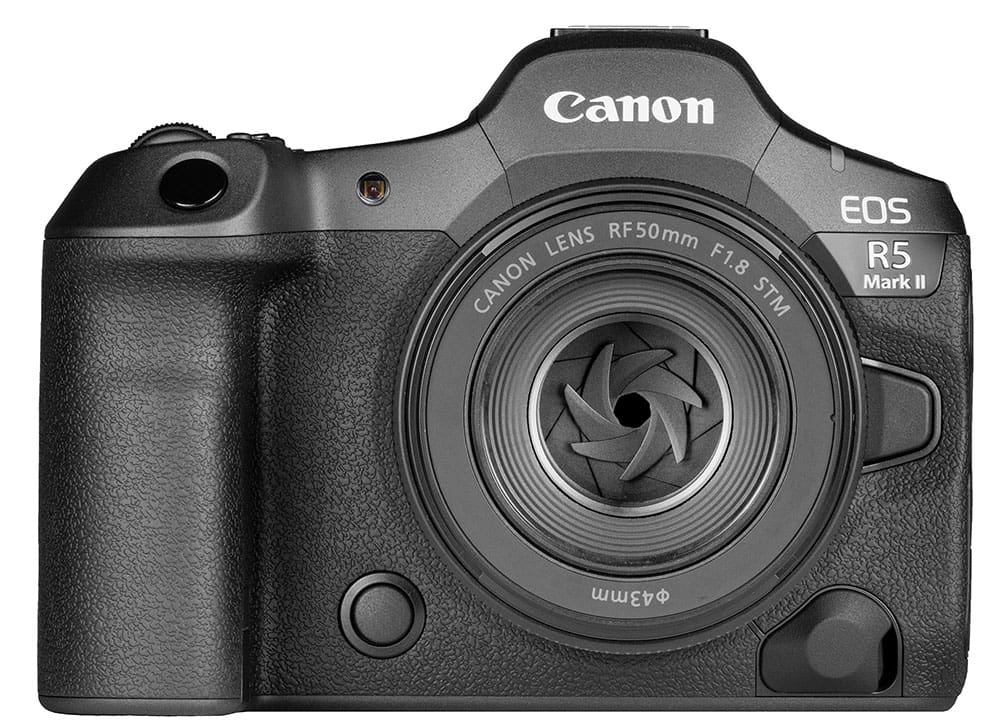
Canon R5 mark II
The new Canon flagship R1 camera is also now available, and we have a Canon R1: Complete Camera Guide planned for the new year. I don’t expect this to challenge the R5 mark II in popularity, as it’s a more expensive camera that is dedicated to a smaller group of sports and action photographers.
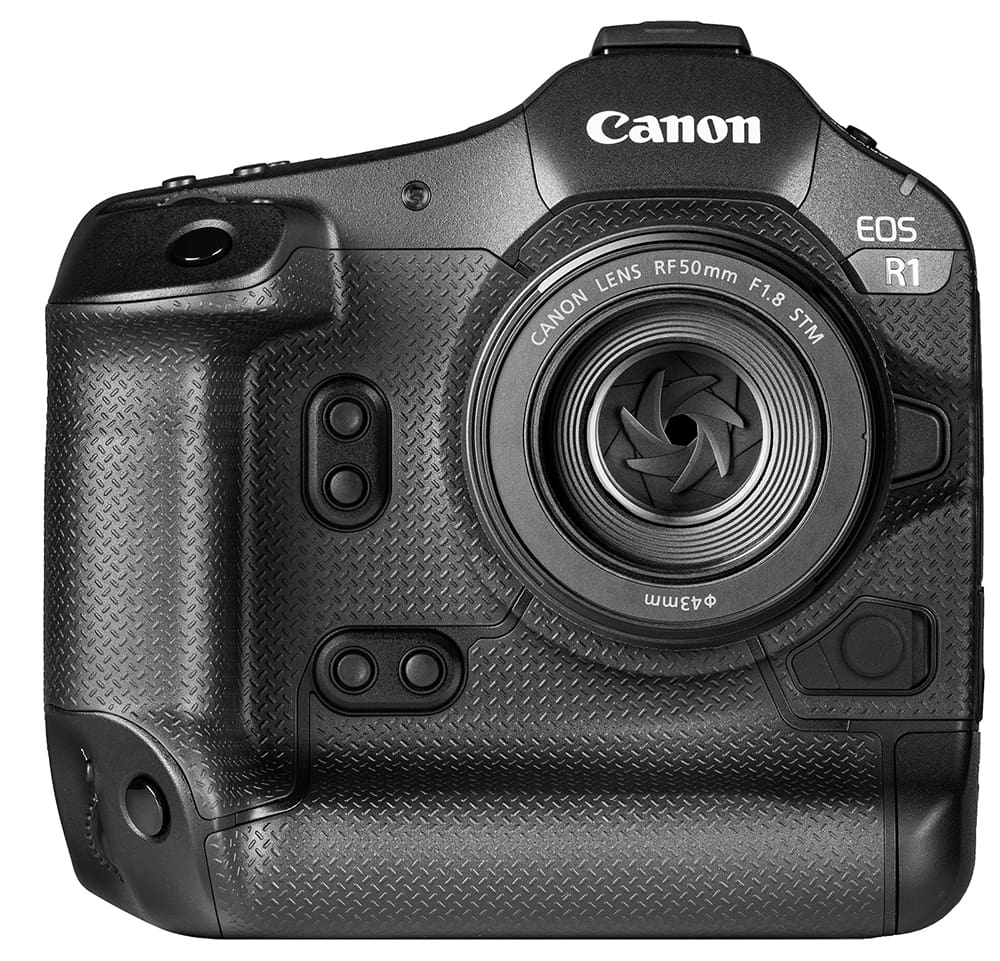
Canon R1
Canon recently released new RF lenses: 24mm f/1.4 L VCM, 50mm f/1.4 L VCM and 70-200mm f/2.8 L IS USM Z and 28-70mm f/2.8 IS STM. With these new lenses, it makes me feel that the Canon RF lens lineup has all the important bases now covered. Of course there will be many more Canon RF lenses to come, but I can now bring forth my upcoming Canon RF mount: Complete Lens Guide; where we can have a proper discussion about everything you need to know about Canon RF lenses. Look for this class in the new year.
Nikon – a big year
Nikon is riding high with their Z 8. Most all the serious Nikon shooters have migrated to either the Z 8 or Z 9. The move to eliminate the physical shutter and go with an electronic one was a gamble by Nikon that has worked out quite well for all involved.
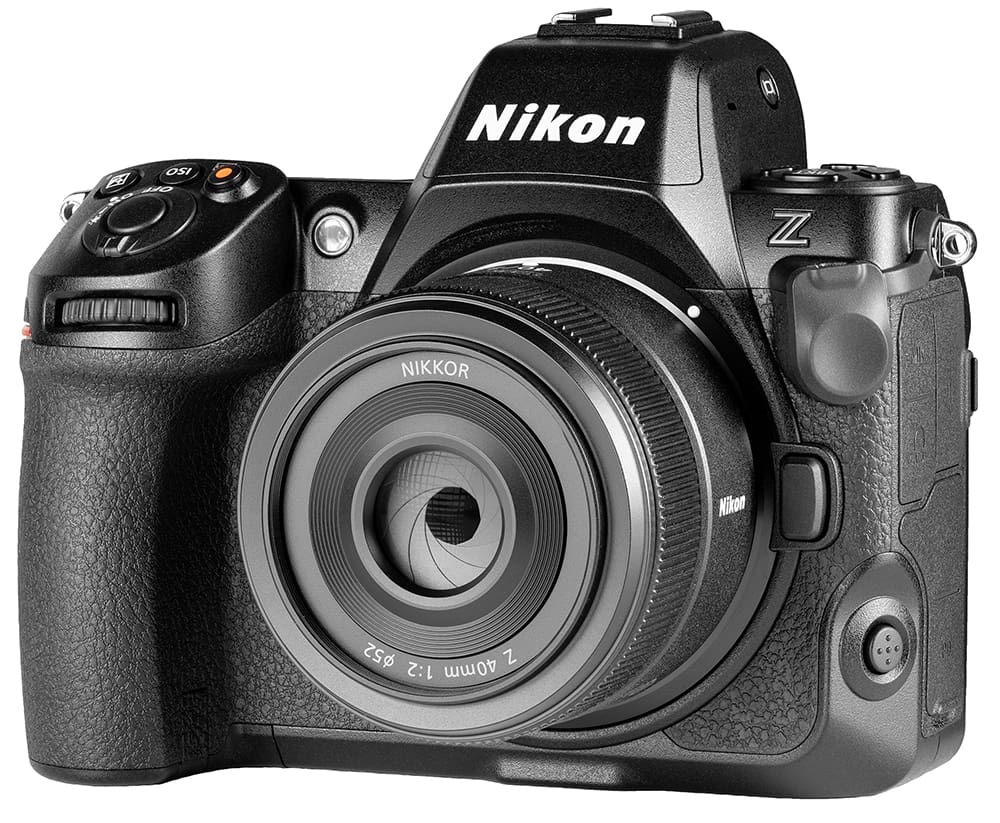
Nikon Z 8
Now that the Z 6III camera has emerged, so too has our Nikon Z 6III: Complete Camera Guide. This is our newest camera class (just released today) and I expect this to be a strong seller for those in the market for a smaller, lighter, and more affordable full-frame Nikon. If you’re a Nikon shooter you may also want to take a look at my new Nikon Z mount: Complete Lens Guide; this is a complete education on how to use lenses with a particular focus on the Nikon way of doing things.
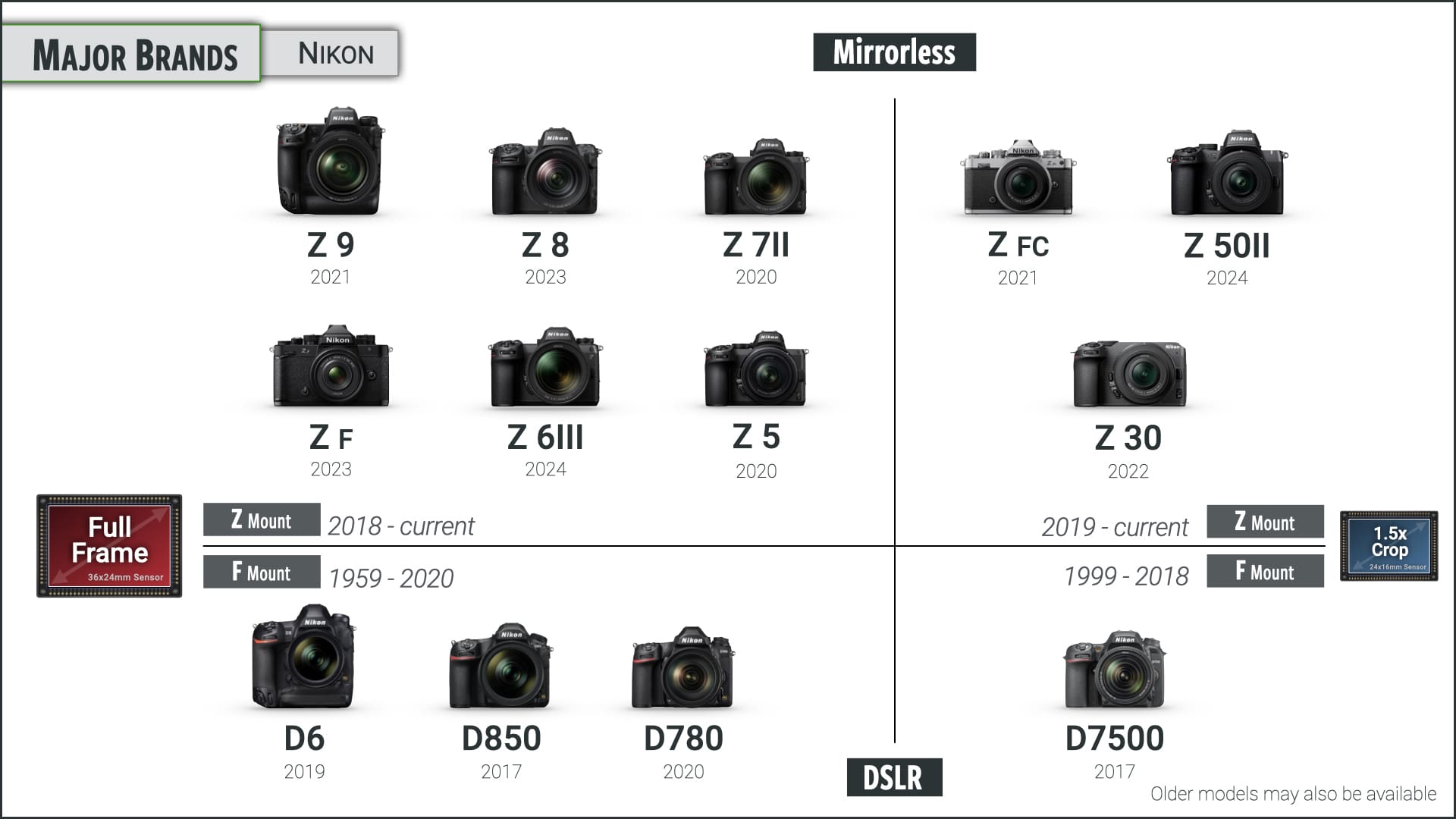
Sony – a bit of an odd duck
Sony doesn’t have a tiered system of cameras where one camera is clearly better than another camera. Sony picks a popular usage and makes a camera to fit that need. They have cameras geared for sports, high-resolution, video, and travel. If you want a multi-purpose camera you can choose a base A7IV or a top-of-the-line A1II. Because of this, Sony owners are spread out among the many high-end options available, and we don’t see the concentration of numbers like we do with the other systems.
The Sony E mount: Complete Lens Guide is another new class we introduced in 2024. If you are a Sony fan and want to know everything there is to know about Sony lenses – how to choose the right one and make the best use of it in the field, this is the class for you.
Fujifilm – a quiet year or viral popularity?
Fujifilm has had a bit of a quiet year; if you don’t count the viral popularity of the compact X100 VI. In a rare break of tradition I am going to create a Fujifilm X100 VI: Complete Camera Guide making it the first fixed lens camera to get a full course. It’s a remarkable camera and has proven to be a popular choice among a wide swath of photographers. Look for this class in early 2025.
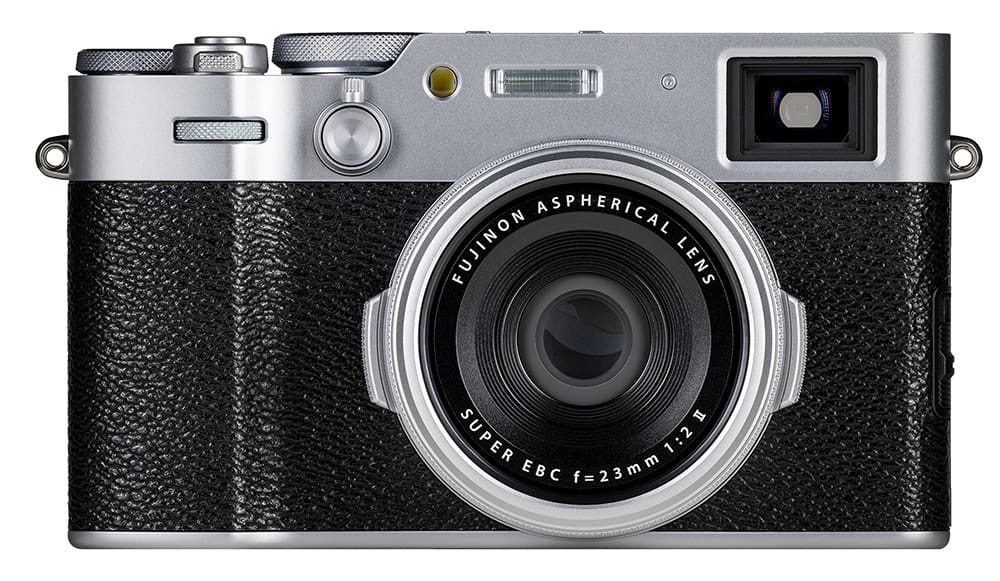
Fujifilm X100 VI
Fujifilm did introduce a couple of more entry-level cameras, which is good to have in their lineup, but they didn’t stir the excitement of the enthusiasts. The medium format GFX100S II has proven to be a hit for the medium format crowd. While we don’t have a class for this specific camera, we do have a Fujifilm GFX100 II: Complete Camera Guide which will do quite well for the 100S II camera, as most everything in the course applies to both cameras.
As with the other brands we also introduced a Fujifilm X & G mount: Complete Lens Guide that fully covers both systems within the Fujifilm lineup. A lot of technology is shared between the X and G systems and that makes discussion about two different lens systems quite easy in this class.
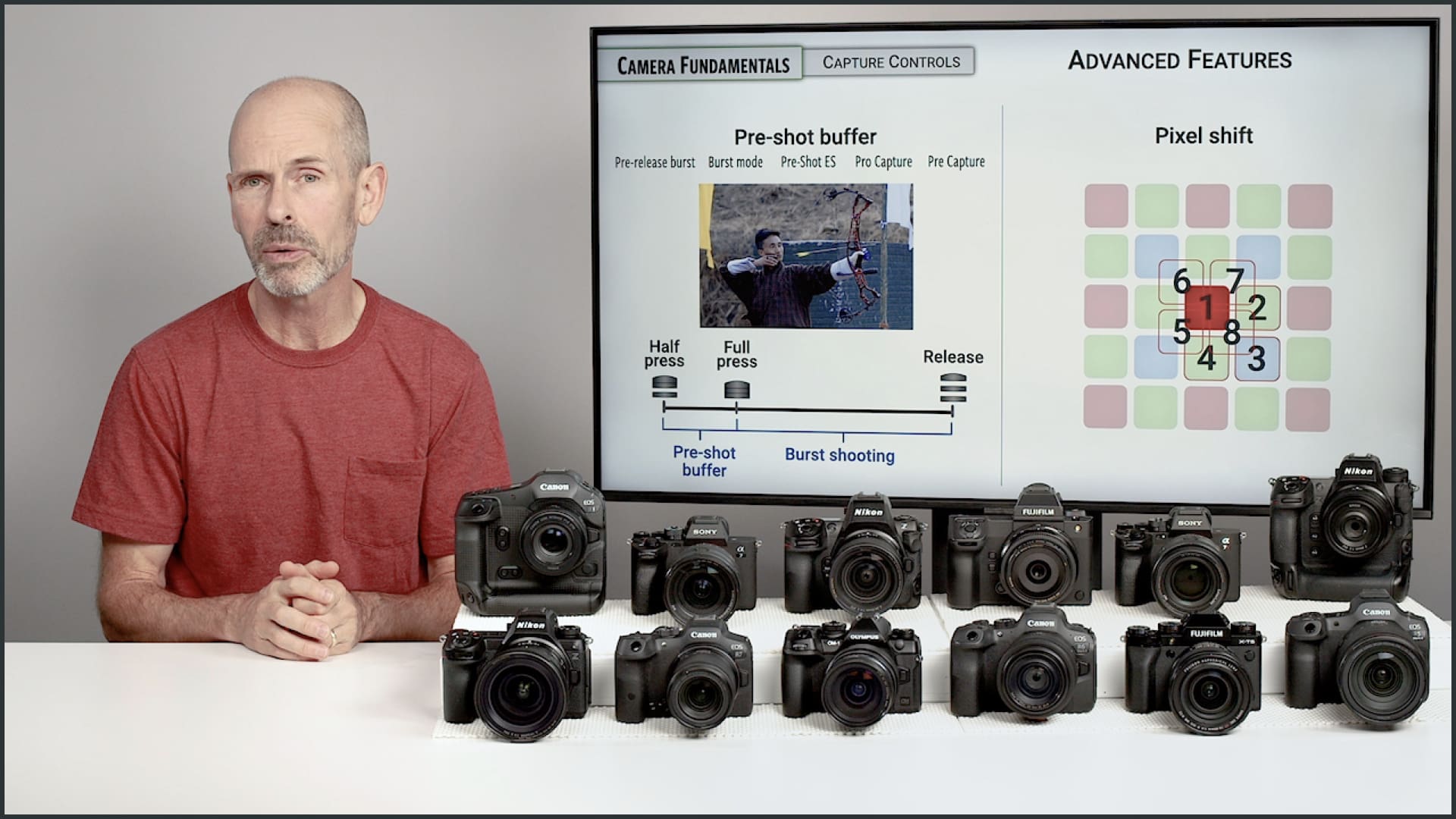
OM System – formerly known as Olympus
When Olympus sold off its photo division to OM Digital Solutions Corporation in 2020, I was cautiously hopeful, but didn’t have great expectations. In the 4 years of new ownership we’ve seen exactly 1 exciting new product – the OM-1, and that camera was likely well under production at the time of sale. Which is to say that, in my opinion, OM System has been coasting on its current product base.
The new cameras have been not much more than firmware updates or name-plate replacements. In addition, new and original lenses of interest have been few and far between. This is of great disappointment to me because I believe the photographic world needs what OM System has in its veins: a small highly proficient and durable camera designed to go anywhere. The small sensor works wonders for wildlife and action and is an ideal travel system.
I’m continually amazed at the strong fan-base of the OM System – to repeat what I mentioned earlier – the OM-1: Complete Camera Guide was our number one seller in 2023. We did update the course to include the minor changes included in the (slightly) new OM-1 mark II, so the class now fully covers both cameras.
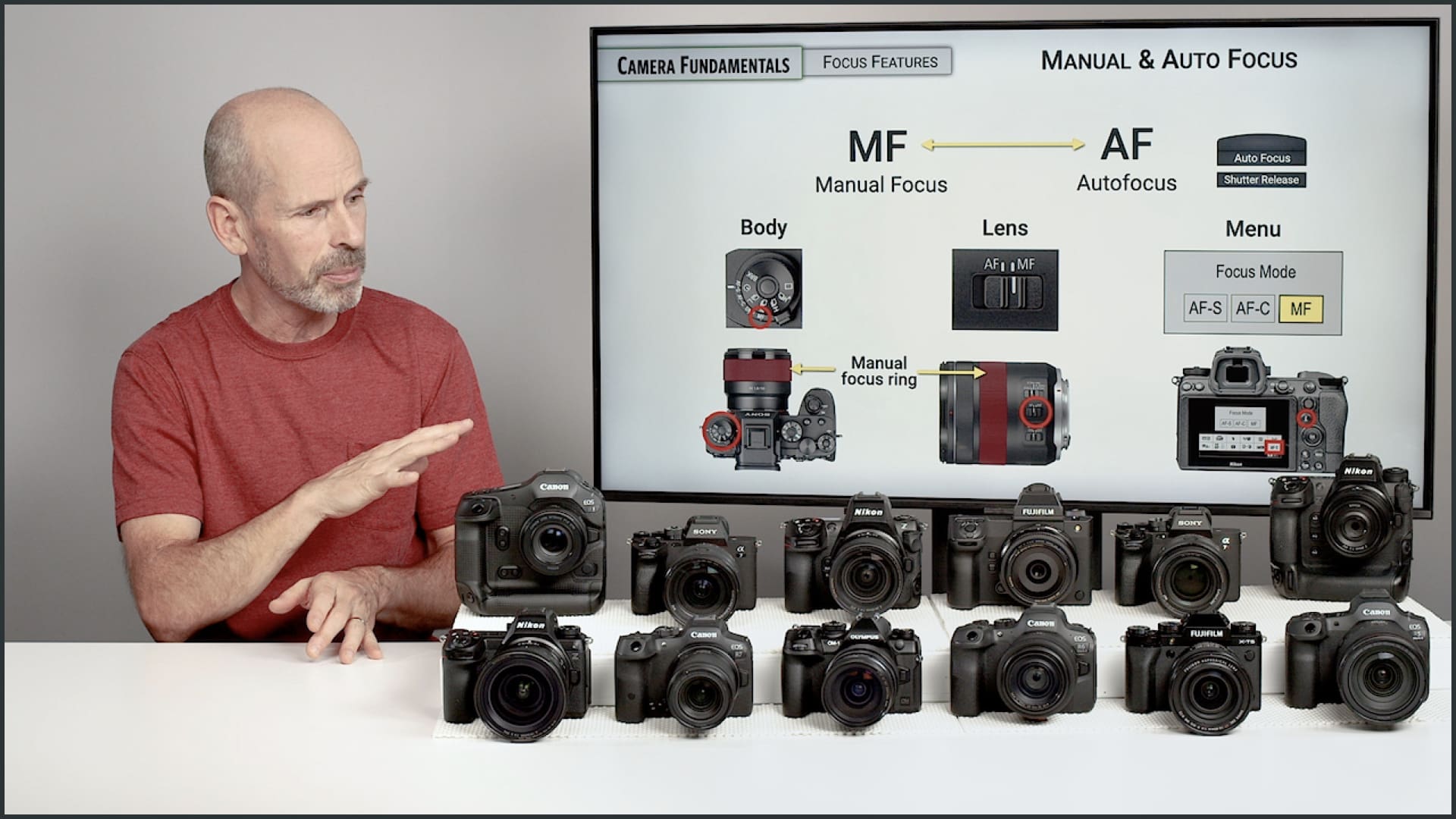
The Most Popular Camera System
Last year I developed a scoring system to rate the relative strength of the different camera systems available. I wanted to see what was the most diverse and numerous in modern cameras and lenses. I’ve since recalculated the results for the start of 2025 to see if things have changed.
While there has been some shuffling at the top of the pack, the top four strong eco-systems for interchangeable lens camera’s remains the same. My criteria for determining a score has remained the same: 50 points for every new camera introduced over the last 4 years, 20 points for each new lens over the last 4 years, and one point for every lens (including aftermarket) available for that lens system.
#1 Sony E-mount
#2 Canon RF-mount
#3 Fujifilm X-mount
#4 Nikon Z-mount

All of these systems are diverse and well supported, meaning you could pursue most any photographic pursuit with any one of these systems and feel confident you’ll have access to quality gear to fit your needs.
All of the camera systems in the “medium” ranking gained in strength in comparison to last year’s results, but fell well below the top four. Is it a problem if you choose a system outside of the top four? No, but you should be aware of what you are getting into.
It’s not unlike buying a car. Buy a Toyota and you know that service and parts won’t be that hard to acquire. Get yourself and Alpha Romeo, and yes you’ll have a nice car, but you’ll need to be very careful where you take it for service. There are many good systems that ended up with a “Medium” ranking. It doesn’t mean their bad, it just means that they are not as diverse or as well supported. If they offer what you need and want, and you like the way they work for you, you’re good to go with that system.
When it comes to the “Weak” ecosystems, these are the ones that I would not recommend for new photographers. Many of these systems are a dead-end when it comes to new products and support, or they may be highly limited and specialized systems. Yes, these “Weak” products will continue to shoot great photos, but they will be limited in the diversity of what they can do.
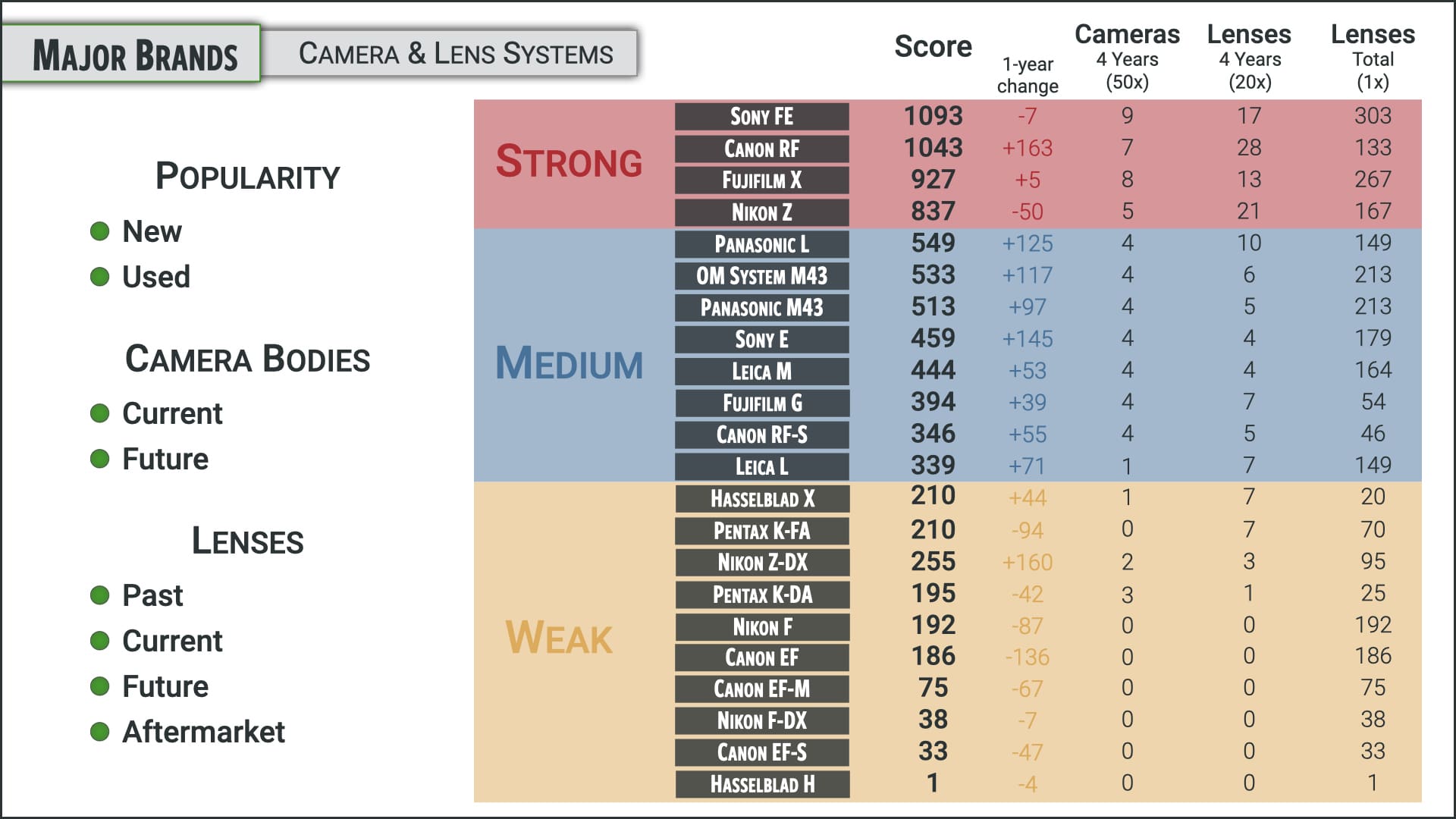
How to know when it’s time for new camera
It’s hard for some people to know if it’s the right time for a new camera. Photographers work very closely with their camera and that “relationship” is important to creating great photos. For some, a new camera is just a shinny new object to possess and play with. For another, it’s the key to having the right set of tools to pursue your craft.
Debating the merits of upgrading to a new camera is not a new subject for me. Check out my previous blog “Is it worth it” for more of my thoughts on this subject.
To keep it succinct here, if you’re not happy with your current camera, if it’s not delivering the results you would like and you can afford a new camera, then a new camera might be a good idea. If you’d like to learn more about the current photographic market and the latest selection of interchangeable lens cameras then take a look at the 2025 Camera Buyer’s Guide.

Become part of John’s inner circle
Sign up for the newsletter here — it’s free.
Want to become a better photographer?
Check out John’s selection of photography and camera classes here.
